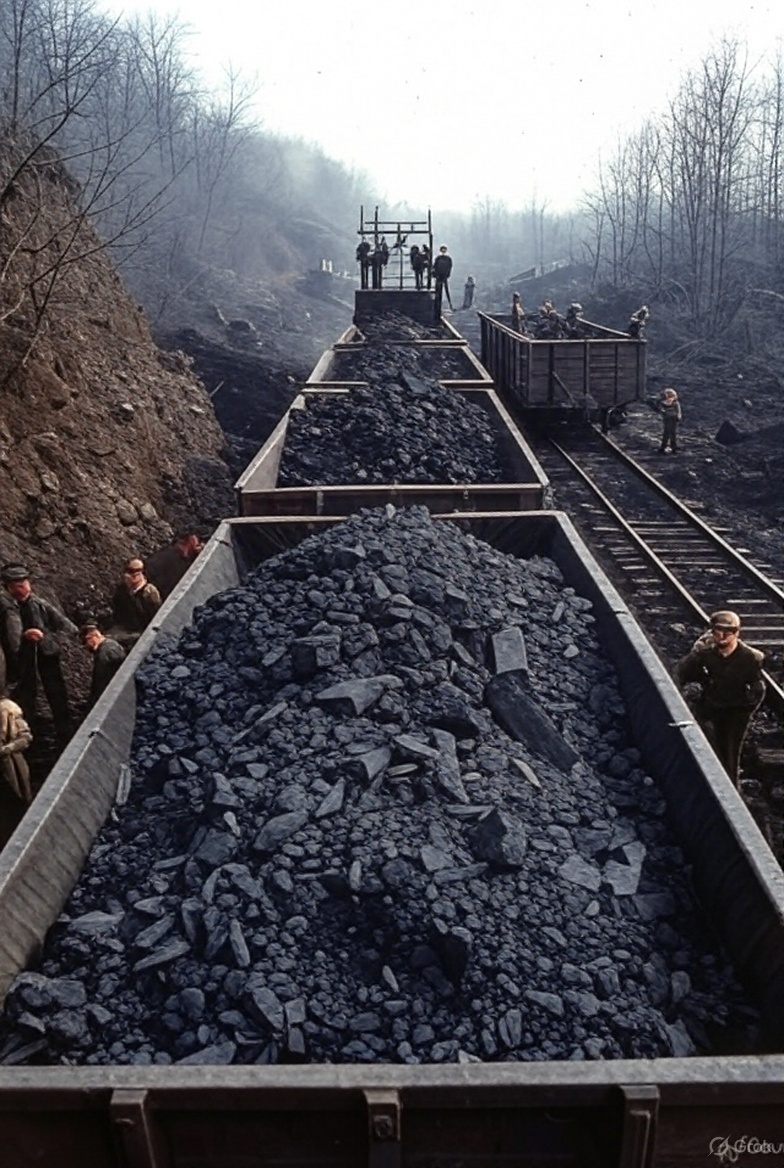Author: Robert Břešťan, HlídacíPes.org
The nuclear arsenal with which Russia today threatens the world has its deepest roots in uranium mined on Czech soil. Shortly after the Second World War, the Soviets made sure they secured this scarce raw material in Czechoslovakia – and they moved fast.
It was only six months after the war ended. On 23 November 1945, a strictly secret intergovernmental agreement on uranium mining was ready for signature in Prague.
During earlier negotiations, Moscow’s representatives had made it quite clear that Czechoslovakia’s uranium was intended to help them catch up with the American atomic monopoly and build their own bomb.
The document was signed on the Czechoslovak side by Hubert Ripka, the National Socialist Minister of Foreign Trade, and on the Soviet side by Ivan Bakulin, Deputy Minister of Foreign Trade.
That agreement launched decades of uranium cooperation. The original terms soon proved expensive and disadvantageous for the USSR, especially because of the required investment and the purchase price of the ore. After the communist takeover in 1948, the deal was repeatedly renegotiated – each time tilting the balance further against Czechoslovakia. By the normalisation era of the 1970s and 1980s, the country was losing heavily on uranium mining.
Perhaps that is why, surprisingly, in the 1980s the comrades agreed that the state company MAPE in South Bohemian Mydlovary would process West German ore into yellowcake for the “imperialist” firm Saarberg Interplan Interuran.
Thousands of Prisoners in the Uranium Mines
Centuries ago, when silver miners in Jáchymov hit a shiny black vein, they knew they were in trouble – the ore was called “pechblende” (bad-luck ore). Attitudes changed dramatically with the dawn of the nuclear age.
Uranium became the most coveted raw material of the early atomic arms race – and the Soviet Union did not have enough of its own. It found what it needed in Czechoslovakia.
As historian Prokop Tomek writes in his study *Czechoslovak Uranium 1945–1989*, at the end of the Second World War Jáchymov was the only known uranium deposit in territory controlled by the Soviet Union.
From August 1945 Soviet military delegations visited Jáchymov in rapid succession. The first shipment – almost 31 tonnes of uranium ore – left for the USSR shortly after the November 1945 agreement was signed.
The initial labour shortage, caused by the expulsion of German miners, was first solved with volunteer brigades and German prisoners of war. “The first transport of 250 POWs arrived in Jáchymov in March 1946; further transports followed until 1947, when the number of prisoners reached roughly 5,000,” Tomek notes.
After the 1948 communist coup, the regime began deploying prisoners – mostly political ones – on a massive scale under brutal conditions. At the peak in 1953, a record 13,821 inmates toiled like slaves in the mines.
The communist secret police (StB) simultaneously enforced total secrecy around the entire uranium industry. That secrecy itself became a source of fresh labour: in late October 1949, for example, the StB arrested sixteen people – mostly former senior managers of the Jáchymov Mines national enterprise – on charges of high treason and sabotage.
The uranium sector remained a top StB priority for decades. In April 1970 the service launched a nationwide operation code-named “Uran”, preparing a show trial against a group accused of counter-revolutionary activity in 1968. One of the defendants was Karel Boček, the dismissed director-general of Czechoslovak Uranium Industry (ČSUP). In June 1972 he was sentenced in absentia to 13 years – he had escaped custody in July 1971 and fled to West Germany.
The StB later complained in an internal report that “the fugitive engineer Karel Boček is one of the leading experts in our uranium industry and, as a bearer of state secrets, knows classified data not only about our own uranium industry but also about the uranium industry of other Comecon countries”.
A Bill for Tens of Billions That Keeps Growing
Until the first half of the 1960s uranium was extracted exclusively by underground mining. From the 1970s onward, chemical in-situ leaching using sulphuric acid became dominant – with lasting environmental consequences.
When a leaching field was exhausted – for instance at the Hamr na Jezeře deposit in the 1970s – no one bothered with proper decontamination. Over time, groundwater was contaminated at numerous sites, most notoriously at Stráž pod Ralskem.
Mining there ran from 1968 to 1996 and affected an area of 27 square kilometres (roughly the size of the entire town of Vrchlabí). To extract 15,862 tonnes of uranium, approximately four million tonnes of sulphuric acid were pumped into the ground. Clean-up work continues to this day.
In the late 1990s the cost of remediation at Stráž pod Ralskem alone – with decades of work still ahead – was estimated at 20 billion crowns. The state company Diamo now expects the project to run at least until 2042, with total expenditure already exceeding 50 billion crowns.
Communist planners, of course, never included these future costs in the price of the uranium.
“As Prokop Tomek concludes in his study, the main culprits for the plundering of Czechoslovak uranium and the resulting economic and ecological damage are – alongside the initiator, the Soviet Union – the economic officials of communist Czechoslovakia itself, who obediently fulfilled the nonsensical demands of their Soviet partners despite the obvious unprofitability of the entire enterprise.”
Czechia is still paying the bill.

